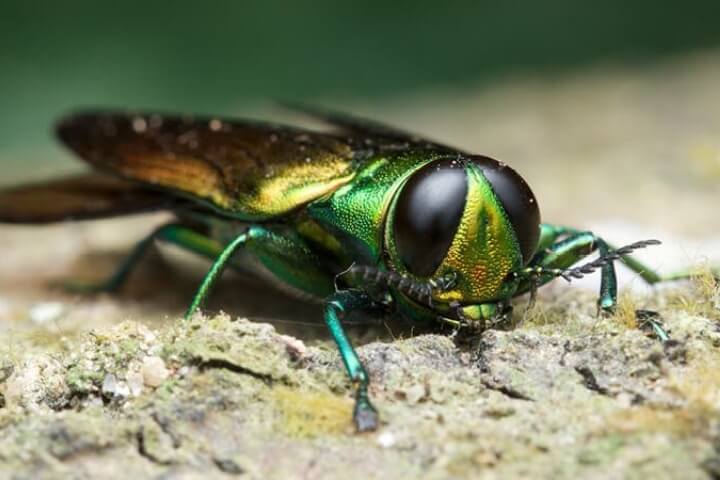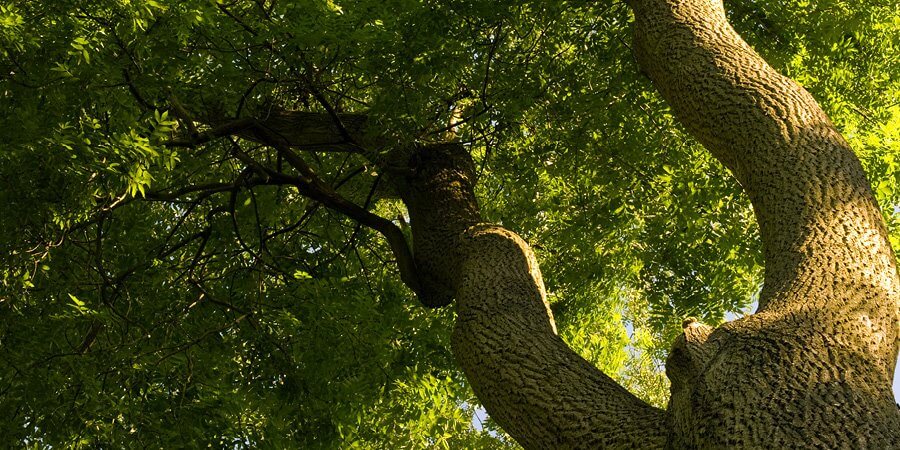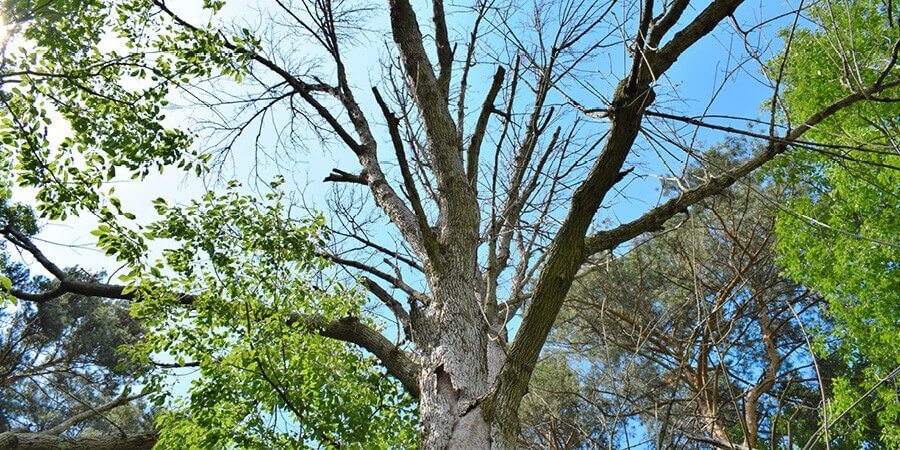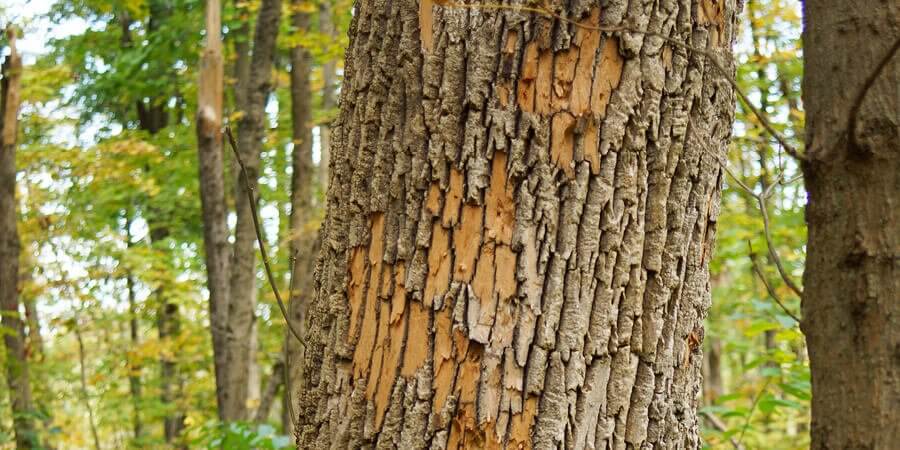
Across Massachusetts and greater New England, towering ash trees are a beautiful and impressive sight in any season. From serving as sources of food and shelter for forest species to providing valuable timber to humans, ash trees are vital members of the local ecosystem.
Sadly, this important species faces an existential threat in the form of the emerald ash borer, an invasive beetle from Asia with a voracious appetite that can wipe out entire stands, leaving behind a wake of destruction — and danger for humans and property near the infected trees that are at risk of crashing down. To keep communities safe, it’s important to recognize the signs of emerald ash borer infestation to protect trees and reduce potential hazards.
What is the emerald ash borer?
First discovered more than 20 years ago in Michigan, the emerald ash borer (EAB) is a nonnative pest originally imported from East Asia. As the name suggests, the emerald ash borer feasts on ash trees, primarily white ash (Fraxinus americana), green ash (Fraxinus pennsylvanica), and black (or brown) ash (Fraxinus nigra). Ash trees are a common sight in both wild and urban environments across central and eastern North America. Because of the wide range of hosts available, this destructive beetle has now taken up residence in approximately 35 U.S. states and five Canadian provinces.
The emerald ash borer has four life stages: egg, larva, pupa, and adult. Adults are about half an inch long. They are colored dark green with a metallic sheen, with a bright coppery-red or purple abdomen. The white larvae are about one inch long. Each larva has a brown head, small pincers, and an abdomen shaped like a bell. In the spring, pupae emerge. They are cream-colored at first but get darker over time. Larvae and pupae make their homes underneath the bark of their host trees, feeding on the nutrient- and water-rich tissues of the plant host. In late spring, adults emerge to mate. They lay small whitish-yellow eggs that become reddish-brown over time. Females can lay more than 100 eggs during the course of their lives.
What does an ash tree look like?

To effectively protect your property from the emerald ash borer, you must first determine whether you have ash trees. Ash trees are easy to identify. Common characteristics of ash trees include:
- Compound, deciduous leaves with five to nine leaflets
- Branches, buds, and leaflets that grow opposite from each other
- Bark ridges shaped like diamonds on adult specimens
Although the majority of ash trees are small to medium in size, some species can reach heights up to 120 feet tall. Small purple, green, or cream-colored flowers grow in clusters. The winged, one-seeded fruits are called samaras.
What does an infested ash tree look like?

Although the emerald ash borer will feed on healthy specimens, adults often prefer to attack stressed trees. Infested ash trees have distinctive signs of infestation. The most telltale sign is “blonding,” or signs of woodpecker foraging activity, which is clearly visible on the bark of infected trees. Trees with significant infestation show canopy dieback where you will notice numerous dead branches, clearly evident at the top of the tree. In addition to these symptoms, if you look closely at the bark of the tree, you may notice D-shaped exit holes, caused by the adult insect emerging from the tree. Small infected trees can die within two years, while large specimens may last up to four years before succumbing.

Are infested trees dangerous?
Yes, infected trees can be very dangerous! As soon as ash trees become infested, they begin to dry out and lose their structural integrity. Severely infested trees can lose limbs or topple over at any time, posing a danger to people and property below. Trees in this weakened state also pose a higher risk to the tree crews who work on them, which is why it is important to act quickly and have an arborist evaluate your trees before they deteriorate. Waiting too long could potentially increase the risk, and therefore cost, of the tree work needed to be done.
Can infested trees be saved?
Infected trees can be saved if the insect is detected early enough, and they can also be preventatively treated if there is no insect present. An arborist will look at a number of indicators to determine if a tree can be saved, and then have a conversation with the owner to determine what the best course of action is. If it is determined that a tree is a good candidate for treatment, there are highly effective treatment options available, and they usually only require 1 treatment every 2 years.
Have concerns for your trees?
Contact us right away if you suspect that you have ash trees on your property. We’ll conduct an assessment and discuss the best management and treatment options for your landscape. Be sure to see this month’s special offer “Free Tree Evaluation” to find out more about your tree’s health.
Emerald ash borer infestation: Signs, symptoms, and treatment options in Eastern Massachusetts
Also Serving Rhode Island
Boston | Worcester | Cambridge | Brockton | Quincy | New Bedford | Fall River | Newton | Foxboro | Framingham | Plymouth | Attleboro | Taunton | Hingham | Needham | North Attleboro | Norton | Easton | Franklin | Walpole | Dover | Westwood
Providence | Warwick | Cranston | Pawtucket | Newport | Woonsocket | Cumberland | Coventry | Newport | Johnston | North Kingstown | Bristol | Portsmouth
Home » Emerald ash borer infestation: Signs, symptoms, and treatment options



